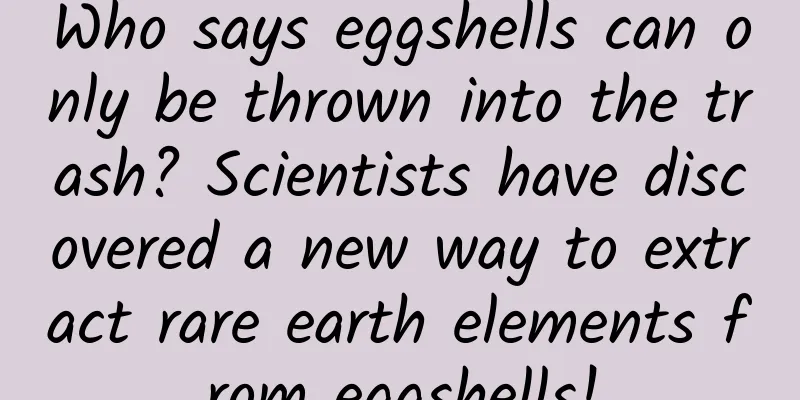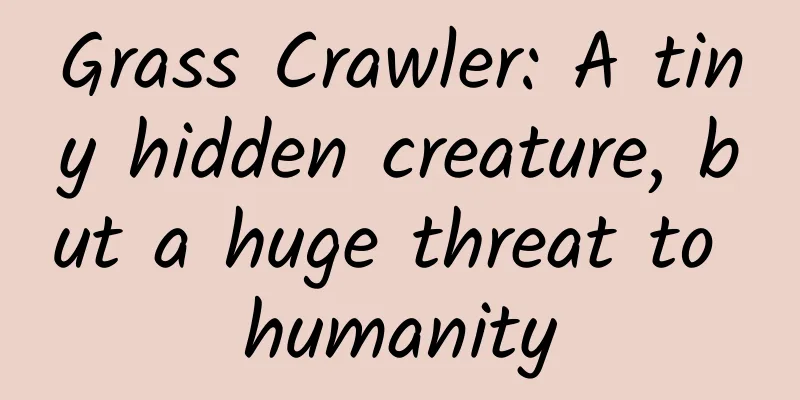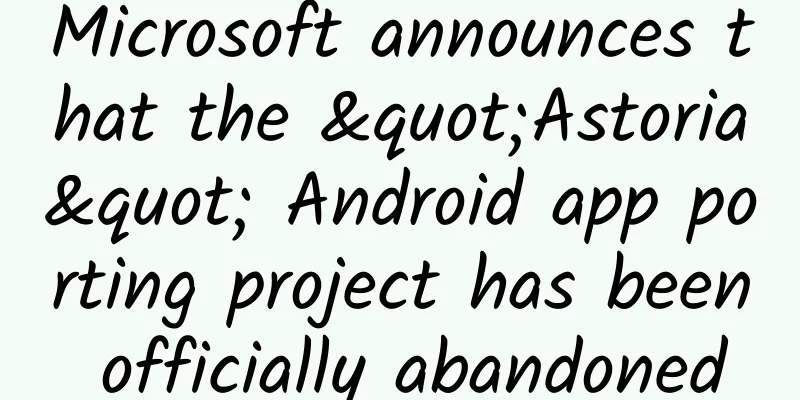Who says eggshells can only be thrown into the trash? Scientists have discovered a new way to extract rare earth elements from eggshells!

|
Eggs are an indispensable nutritious food in our daily life. After enjoying a delicious egg, do we always throw away the eggshell? In fact, the seemingly useless eggshell contains great value! Eggshells are mainly composed of inorganic and organic matrices. The inorganic matrix includes calcium carbonate (calcite), magnesium carbonate, etc., of which calcium carbonate is the main component, accounting for more than 80%; the organic matrix is mainly composed of protein, accounting for more than 3%. Calcium carbonate plays a key role in the formation of eggshells. The hard structure of the eggshell is ultimately formed by the deposition of calcium combined with the organic matrix. The latest scientific research shows that eggshells can be used to extract rare earth elements, which are precious resources with wide applications in high-tech fields such as energy, military, and medicine. Therefore, the recycling of eggshells is not only environmentally friendly, but also opens up new ways for the recycling of rare earth elements. Copyright images in the gallery. Reprinting and using them may lead to copyright disputes. What are Rare Earth Elements? Rare earth elements consist of 15 lanthanide elements in the periodic table (including lanthanum, cerium, praseodymium, neodymium, promethium, samarium, europium, gadolinium, terbium, dysprosium, holmium, erbium, thulium, ytterbium, and lutetium), as well as scandium (atomic number 21) and yttrium (atomic number 39), totaling 17 elements. Copyright images in the gallery. Reprinting and using them may lead to copyright disputes. As early as the end of the 18th century, rare earth elements began to be discovered one after another. Due to the small number of rare earth minerals discovered at that time, people could only use chemical methods to produce a small amount of water-insoluble oxides. These oxides were habitually called "earth" in history, hence the name "rare earth". Rare earths are precious strategic resources, known as the "mother of new materials". They play an important role in new energy vehicles, industrial robots, aerospace, national defense and military industries, especially in high-tech industries. They can be called "universal earths" and are also known as "vitamins of industry." Copyright images in the gallery. Reprinting and using them may lead to copyright disputes. Rare earth elements are rare because they are dispersed in the earth's crust and are difficult to separate from other elements. They are a non-renewable resource, and their formation and enrichment require long geological processes (such as volcanic eruptions, crustal movements, etc.), and they cannot be replenished naturally in a short period of time. In addition, the mining and refining of rare earth elements requires a lot of water, energy and chemicals, which will pollute the environment. Therefore, the efficient mining and recycling of rare earth elements has important research value. New method for extracting rare earth elements from solution On June 4, 2024, scientists published a research paper on the use of eggshells to extract rare earth elements from solutions. The researchers placed the eggshells in a solution containing rare earth elements and heated them to a temperature range of 25°C-205°C for three months. The results show that rare earth elements enter the eggshell along the calcium carbonate (calcite) boundary and organic matrix. When the temperature reaches 90°C, the rare earth compound "kozoite" forms on the eggshell surface. As the temperature rises further, the calcite shell of the eggshell dissolves and is replaced by polycrystalline "kozoite". When the temperature reaches 205°C, "kozoite" gradually transforms into stable fluorocarbonate. Fluorocarbonate is a cerium-group rare earth element (light rare earth) mineral with important industrial value. It belongs to the fluorocarbonate type and is one of the important raw materials for extracting rare earth elements. The research results have given new value to seemingly useless eggshells. By utilizing the unique components and structure of eggshells, a sustainable solution for recycling rare earth elements has been provided. This is highly consistent with the principles of circular economy and waste valorization, and achieves maximum resource utilization and sustainable environmental development. Schematic diagram of the recovery of rare earth elements from solution by eggshell. Image source: Reference [1] What other uses of eggshells do you not know about? In the field of food nutrition, eggshell is a high-quality food calcium fortifier. After being washed, dried and ground, eggshell can be added to flour, biscuits and other foods, which not only enriches the taste of food, but also provides valuable calcium, significantly improving the nutritional value of food. In the field of agricultural planting, eggshells can be used as fertilizers and soil conditioners, providing plants with rich calcium, helping to improve soil structure and providing a more favorable environment for the growth of crops. In the field of animal husbandry, eggshell is an excellent feed additive, providing a rich source of calcium for livestock and poultry, strengthening animal bones, promoting the growth and development of livestock and poultry, and bringing greater economic benefits to the breeding industry. In addition, eggshells are also effective in cleaning. For example, breaking the eggshells into pieces and putting them into containers such as thermos can effectively remove dirt and scale, making the container look brand new. Circular economy and waste value utilization are not only the key driving force for sustainable development, but also the only way for us to move towards a green future and build an ecological civilization. We look forward to the emergence of more innovative technologies and models that transform waste into valuable resources, injecting new vitality into the sustainable development of human society and contributing wisdom and strength to the construction of a beautiful earth. References [1] Rémi Rateau, Melanie Maddin, Adrienn M. Szucs, et al. Utilization of Eggshell Waste Calcite as a Sorbent for Rare Earth Element Recovery[J]. ACS Omega, 2024. [2] Huang X, Dong J, Wang L, et al. Selective recovery of rare earth elements from ion-adsorption rare earth element ores by stepwise extraction with HEH(EHP) and HDEHP[J]. Green Chemistry, 2017. [3] Du Licheng. Eggshell and its comprehensive utilization[J]. Feed Research, 2001. [4] Zhang Ruiyu. Utilization value of waste eggshells and its resource utilization methods and technologies[J]. Journal of Chongqing Technology and Business University, 2006. Planning and production Produced by Science Popularization China Author: Shi Chang, PhD in Physical Chemistry Producer丨China Science Expo Editor: Dong Nana Proofread by Xu Lailinlin The cover image and the images in this article are from the copyright library Reprinting may lead to copyright disputes |
<<: The mortality rate is extremely high! This bacteria can "eat meat", so be careful in summer!
>>: The purest horse in the world is actually the "Corgi"? !
Recommend
The latest notice on Hebei heating in 2022: to which month will the heating time be extended?
Recently, there are still weak cold air activitie...
How does Anker run its Facebook advertising page?
Anker is a big player in the Amazon industry. Eve...
The "black box" that is often sought in air crashes turns out not to be black!
The "black box" that is often sought in...
How to quickly acquire and convert customers through online operations?
The traditional education and training industry h...
How to plan an online promotion program? What are the online promotion channels?
As the Internet becomes more and more developed, ...
No budget and want to quit? Teach you how to play ASO even if you don’t have money!
The superiors are always urging ASO to achieve re...
It’s time to enjoy the spring, but don’t get angry!
As the weather gradually warms up, it is a good t...
Is your iPhone lagging more and more? Turn off these 3 default settings and your phone will run smoother
1. Turn off automatic system updates [[398263]] S...
E-commerce operation: how to play limited-time flash sales and case analysis
Limited-time flash sales are a marketing applicat...
The latest ranking of 50 information flow advertising media platforms
The following is the latest traffic rankings of t...
Blood type A is more prone to stroke, while blood type O is the safest? Can blood type determine what disease you get?
"What's your blood type?" In additi...
6.18 Mid-Year Promotion Public Relations Events Review, Galanz Becomes the Highlight!
The most popular e-commerce festival to date is t...
Tips for promoting products on Xiaohongshu!
Tips for promoting products on Xiaohongshu : How ...
How much does it cost to be a Wenshan agent for a mechanical equipment mini program?
How much does it cost to be an agent of the Wensh...
Product selection course for high profits in the blue ocean is a must for e-commerce people!: As long as you can choose good products, you can easily make millions of profits a year
Product selection course for high profits in the ...









